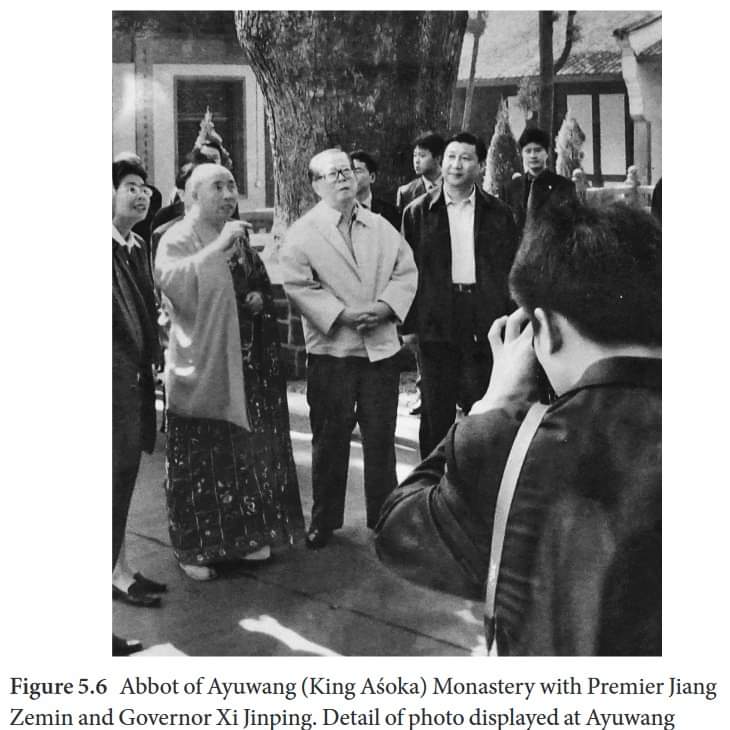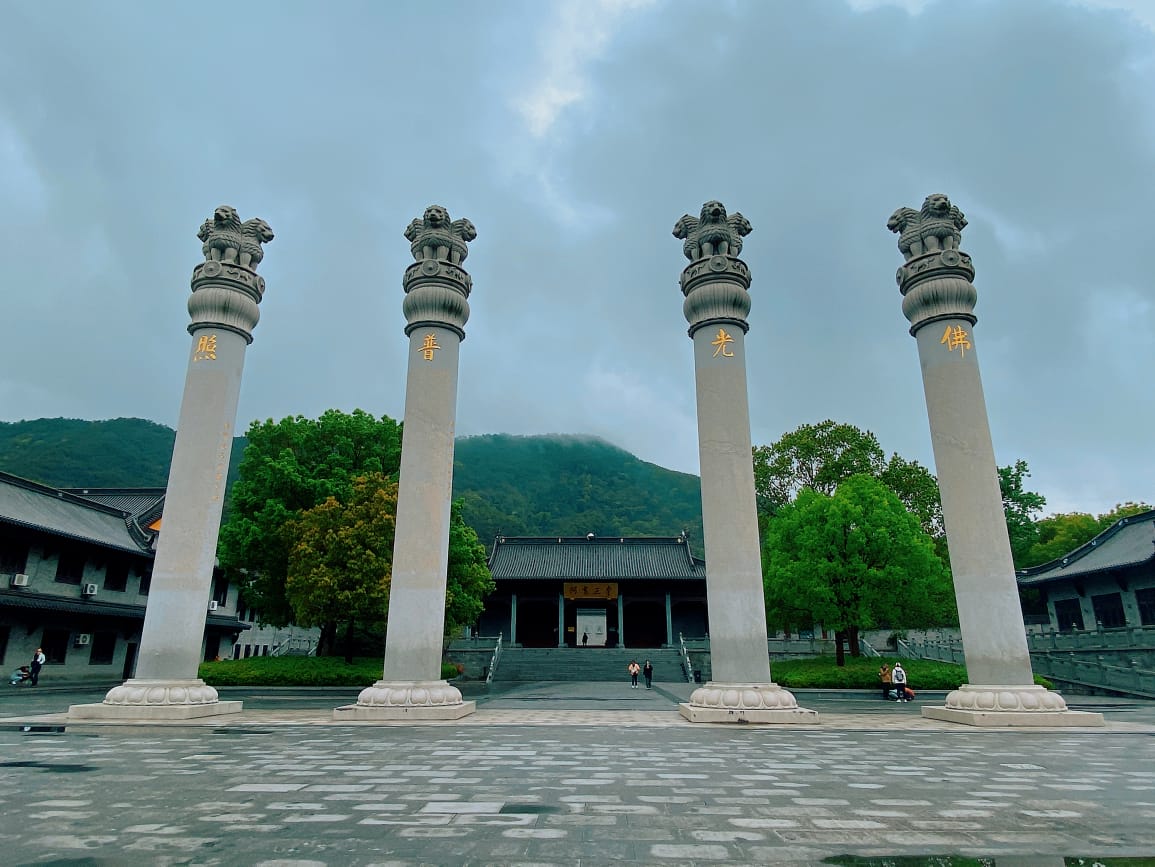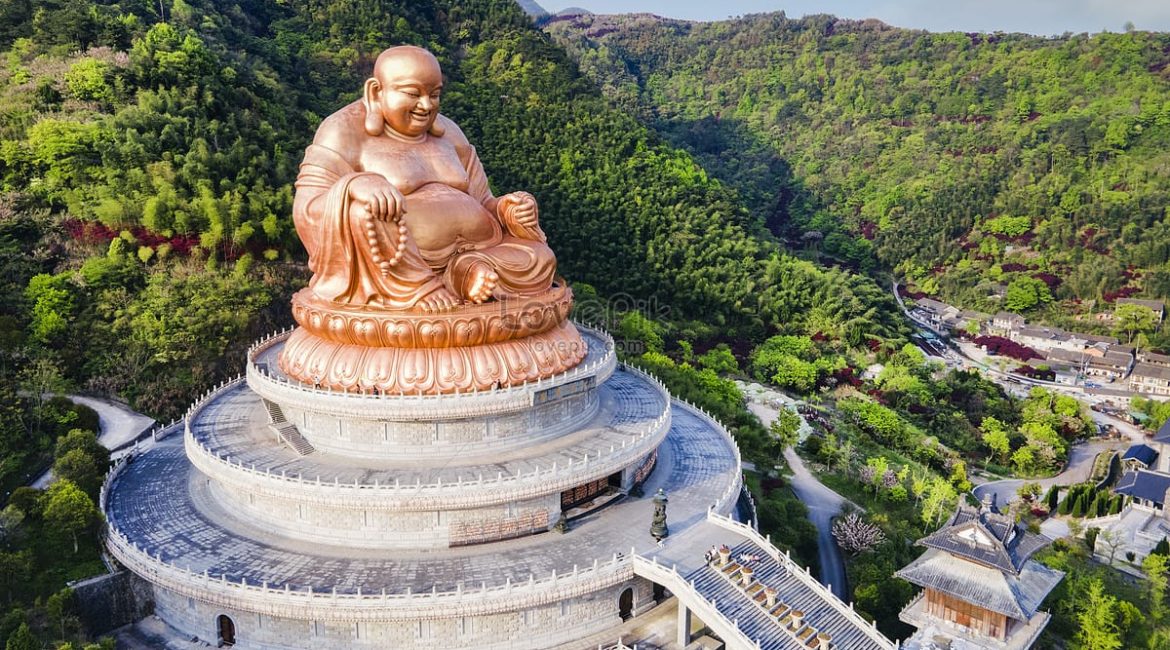The Sixth World Buddhist Forum will be held in China from 15–17 October at Ningbo, Zhejiang, on the eastern coast of China. Delegates from over 80 countries will be participating, with the theme for the conference being titled, “Hand in Hand for Coexistence,” which emphasizes the Chinese emphasis on multipolarity and non-interference.
The Sixth World Buddhist Forum is a cornerstone of Chinese Buddhist diplomacy. The conference is being organized by Wang Bangjin, party secretary of Ningbo, and Jin Liping, municipal party committee supervisor. The previous, fifth session of the World Buddhist Forum was held at the coastal city of Putian, in China’s Fujian province. The Forum will hold a grand opening ceremony at Ningbo’s Xuedou Temple, in the temple’s Longhua Square.
Xuedou Temple is part of the Xuedou Maitreya Complex. It has seen over a millennium of prosperity and decline, and was destroyed and rebuilt five times. The most famous abbot of the temple in recent memory was Master Taixu (1890–1947), the great reform-minded monastic and forefather of Humanistic Buddhism. In 1933, proposed that Xuedou Mountain become one of China’s five renowned Buddhist mountains. (China Daily)
Zhejiang as a heartland of Chinese Buddhism
Ningbo is in Zhejiang Province, with the capital being Hangzhou. The latter has long been touted as a core historical and contemporary hub of Chinese Buddhism. Ningbo also houses the famous Ayuwang Temple (阿育王寺), or the Temple of Ashoka the Great. According to the Princeton University Art Museum, the Ayuwang Monastery is the subject of several legends, including being established in 282 during the Western Jin Dynasty by the foreign monastic Huida (惠達). Its most important artifact is a parietal bone of the Buddha Shakyamuni, which is presently stored in a stupa shaped reliquary in the temple’s Relic Hall (sheli dian 舍利殿). (Princeton University)

The broader province of Zhejiang is core to China’s vision and strategy for Buddhist diplomacy. Former Chinese president Jiang Zemin (1926–2022) visited Ayuwang Monastery with Chinese leader Xi Jinping in 2002, while Xi was still the provincial governor of Zhejiang. Four years later in 2006, the First World Buddhist Forum was held in 2006, during Xi’s tenure as governor and party secretary of Zhejiang.
Sharing “Maitreya Culture” with the world
Ningbo is also described as the hometown of Budai, who is known in Chinese Buddhism as an incarnation of Maitreya (known stereotypically in the West as the fat laughing Buddha). The government of Ningbo Fenghua District has pushed Xuedou Mountain as the “distribution center” of “Maitreya culture”: a platform to explore the cultural essence of openness, tolerance, harmony and joy. The spirit of tolerance, kindness, wisdom, humor, and optimism contained in Maitreya culture shows a wealth of life wisdom that is closely connected with the traditional emphasis on harmony in Chinese culture and philosophy. “Maitreya culture is very helpful in solving people’s spiritual confusion and promoting social harmony,” said Wei Daoru, a researcher at the Institute of World Religions of the Chinese Academy of Social Sciences.

The open-air Maitreya Buddha or Budai stature on Xuedou Mountain, Fenghua, is part of the Xuedou Maitreya Complex. It holds the record of highest sitting posture for a sculpture in the world. In December 2013, a smaller iteration of this stature was moved to Lumbini Chinese Temple at the site of Lumbini, Nepal. This smaller Buddha statue was escorted to the Chinese temple by the Fenghua Cultural Mission, and was an integral event during the 6th Nepal China Festival.
“This Buddha was carefully customized and built by Nepal in Lumbini, which highlights the importance both sides attach to cultural exchanges,” Jin Jianfan, vice chairman of the Chinese Culture Promotion Association, had said. Xuedou Temple has held 16 “Xuedou Mountain Maitreya Cultural Festival” in a row, providing believers with a wealth of Buddhist cultural activities.
The opening ceremony of one of the sessions of the China-South Korea-Japan Buddhist Friendly Interaction Conference was also held on Xuedou Mountain, in October 2016. The purpose of these trilateral exchanges is to reaffirm of the “golden bond” of Buddhism that contributes to a harmonious relationship the three countries, and to explore ways in which the three nations can contribute to regional stability and harmony in the Asia-Pacific region. The conference was first held in 1995, and by 2022 it had been held 22 times.
With additional reporting from Niraj Kumar
See more
Xuedou Mountain has something for everyone (China Daily)
Stele of the Ayuwang Temple Śarīra Reliquary, 1884 (stone); late 19th to first half of 20th century (rubbing) (Princeton University Art Museum)
Related news from BDG


